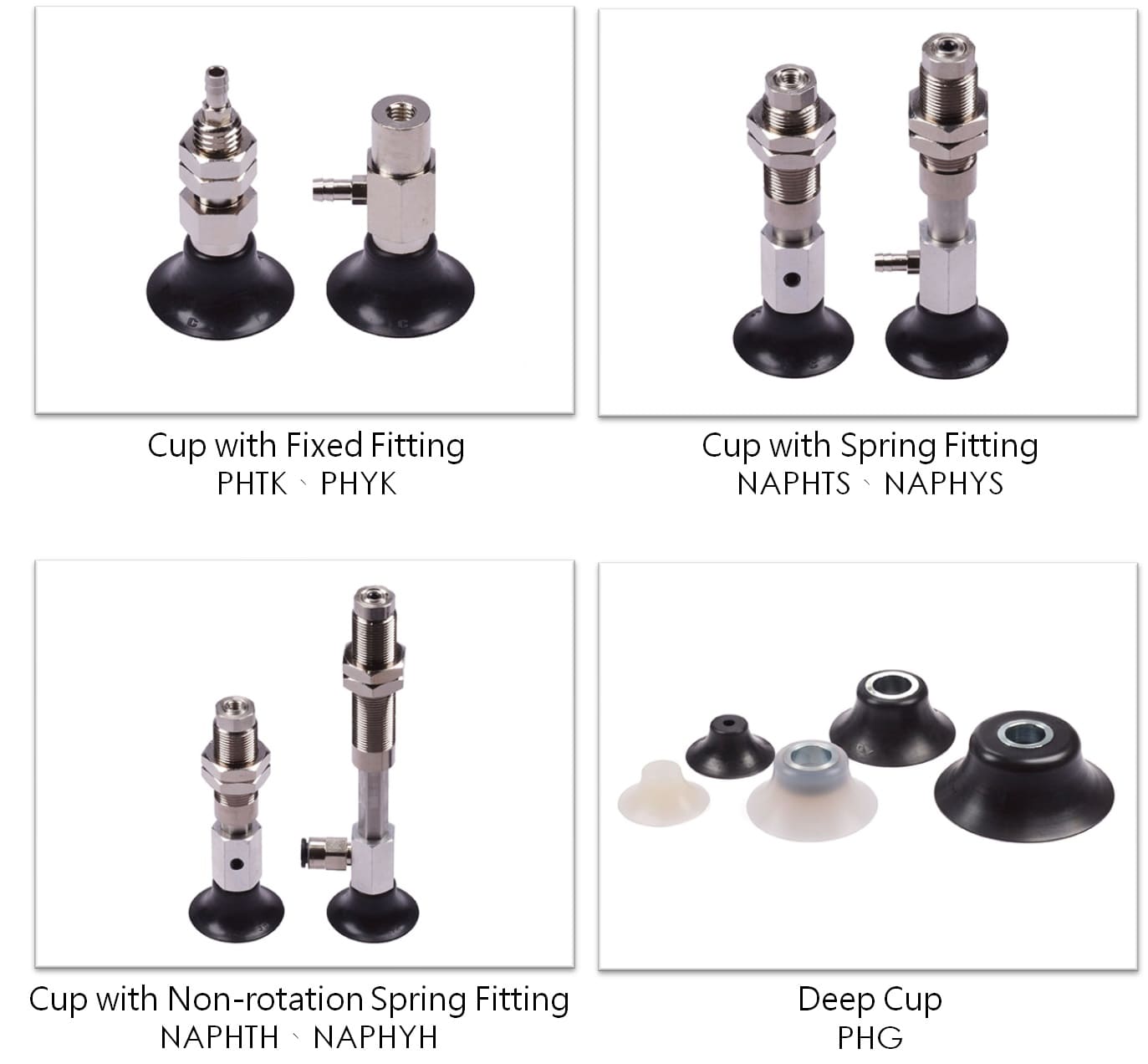

- All Products
- Pneumatic Series
- GENTLE Pneumatic Fittings
- GENTLE Ionizer
- CONVUM Ltd.
- FUJIKURA
- FUJI LATEX Co., Ltd.
- KOGANEI Corporation
- iB series
- Air Cylinders, Hands
- Air Valves
- Air Filters, Regulators, Pressure Gauges
- Flow Rate Sensor Switches, Plachain Ducts, Pressure Switches
- Vacuum Equipment, Pads
- Electric Actuator
- Environmental Hygiene Equipment
- Static Electricity Removal
- Fluororesin Products
- Fixed Discharge Pump
- Medium Control Equipment
- Pulse Blow Series
- NKE Corporation
- TAKEX
- Dispensing Series
- Deep Cavity Geometry: Tall cup walls and a deep interior enclose protrusions / bridge recesses, enlarging the sealing area for stable holding.
- Conforms to Uneven/Stepped Surfaces: Handles steps, curves, and cast textures, reducing leakage, drops, and micro-slip.
- Lateral Stability: Cup walls provide side support to resist shifting during acceleration and transfer.
- Size Coverage: ø30 / 45 / 65 / 91 mm for sizing by contact zone, payload, and vacuum capability.
- Material Options: N (NBR) for general oil-resistant duty; S (Silicone) is softer and minimizes marking for appearance-critical or cleaner processes.
- Easy Integration: Compatible with common pad holders and fittings for fast deployment on robots and grippers.
- Applications: Handling lids/covers, die-cast and cast parts, parts with ribs/bosses/studs, stepped surfaces, holed/grooved features, and stable transfer on machining/assembly lines.

Q1: What parts are PH pads best for?
A: Protruded, recessed, stepped, or textured parts—e.g., covers, castings, and die-cast components.
Q2: How do PH pads differ from flat or thin-lip pads?
A: The deep cavity wraps shape variations and increases sealing area, while flat/thin pads are for smooth, flat, rigid surfaces.
Q3: What sizes are available?
A: ø30, 45, 65, 91 mm—choose by contact area, mass, and motion profile.
Q4: Are they suitable for high-speed automation?
A: Yes. Use appropriate vacuum generator/orifice settings and anti-slip motion profiles; for short cycle times, validate vacuum build and holding force on tool.
Q5: How should I choose between N and S materials?
A: N (NBR) = general/oil-resistant; S (Silicone) = softer and minimizes marking for appearance-sensitive or cleaner stations.
Q6: Do they work with center bosses or edge flanges?
A: Yes—the deep cavity bypasses center bosses and seals around the periphery to reduce deformation and slip.
Q7: How can I improve stability on highly irregular surfaces?
A: Upsize the pad for more contact, tune vacuum flow/orifice, and optimize accel/decel to limit lateral forces and impacts.
Q8: Will they fit my existing tooling?
A: Usually yes—verify holder thread/interface, clearance, and effective stroke; run a small pilot to confirm.
Q9: What are the cleaning and maintenance tips?
A: Wipe with lint-free cloths and mild cleaners; replace pads showing lip wear, hardening, or cracks, or when sealing performance drops.
Q10: Can PH handle heavier parts or higher accelerations?
A: Yes—confirm total suction force with a safety margin for your mass/acceleration; use multiple pads and balanced layouts as needed.




